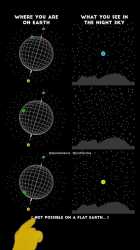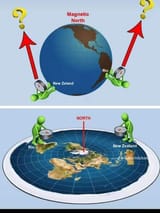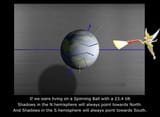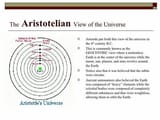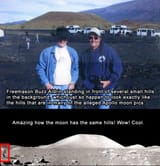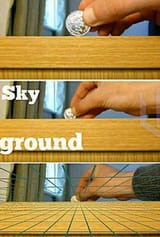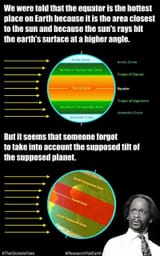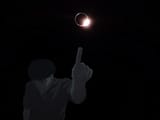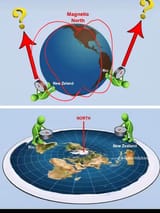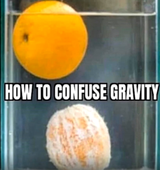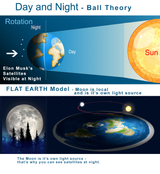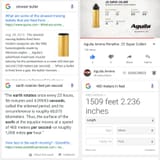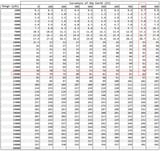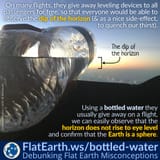>>513352844
Go to a place where you can easily view the sunset or sunrise over the ocean. Be sure to check local weather reports to know the time of day to expect the sunrise or set.
If viewing a sunset, make your first measurement lying down on the ground and your second measurement while standing. If viewing a sunrise, do the opposite. From now on I will explain only the directions for the sunset, please make the necessary adjustments for the sunrise experiment.
Before the sunset, get a friend to measure the height of your eyes while you are lying down and still able to see the horizon where you expect the sunset.
Prepare a stopwatch to begin counting.
Wait for the sunset.
When the last bit of sun has disappeared, start the stop watch and quickly get up and stand in a position that is directly above where your eyes were when you were laying down.
You should be able to see the Sun set again.
Stop the stopwatch when you see the last bit of sun disappear again.
Have your friend measure the height to your eyes in the standing position.
Calculate the circumference of the Earth using the following two equations:
Distance to the horizon D = sqrt(2 * height of your eyes * Radius of the Earth)
To see where this equation came from go to :
http://www-spof.gsfc.nasa.gov/stargaze/Shorizon.htm
[sqrt(2Rh1) - sqrt(2Rh2)]/[2pi * R] = s/S , Where R = The radius of the Earth
h1 and h2= the height of your eyes during the two measurements (h1 should be the bigger of the two heights)
s=the number of seconds between sun sets
S=the number of seconds in one day, which is equal to 60 seconds*60 minutes*24 hours.
{[60sec * 60 min * 24 hours
*
sqrt(2) * (sqrt(h1) - sqrt(h2))^2]/[6sec * 2pi]}^2 = Radius of the Earth
 8/18/2025, 10:04:41 AM
No.513350388
[Report]
>>513350489
>>513350560
>>513350791
>>513350891
>>513350989
>>513351046
>>513351182
>>513351343
>>513351426
>>513351573
>>513351654
>>513352116
>>513352190
>>513352560
>>513352781
>>513352951
>>513353090
>>513353122
>>513353331
>>513353390
>>513353393
>>513353445
>>513354017
>>513354254
>>513354481
>>513354512
>>513354763
>>513354876
>>513355790
>>513356641
>>513356771
>>513356801
>>513357641
>>513358069
>>513358730
>>513359092
>>513359577
>>513359881
>>513359971
>>513360659
>>513361242
>>513361972
8/18/2025, 10:04:41 AM
No.513350388
[Report]
>>513350489
>>513350560
>>513350791
>>513350891
>>513350989
>>513351046
>>513351182
>>513351343
>>513351426
>>513351573
>>513351654
>>513352116
>>513352190
>>513352560
>>513352781
>>513352951
>>513353090
>>513353122
>>513353331
>>513353390
>>513353393
>>513353445
>>513354017
>>513354254
>>513354481
>>513354512
>>513354763
>>513354876
>>513355790
>>513356641
>>513356771
>>513356801
>>513357641
>>513358069
>>513358730
>>513359092
>>513359577
>>513359881
>>513359971
>>513360659
>>513361242
>>513361972
